Rice comes in many varieties, including basmati, long-grain, brown and wild, and is eaten all across the globe alongside a world of dishes.
How rice is cooked varies through preference, tradition, and from country to country, but whichever way it’s done ,there always needs to be some sort of measurement to get the right amount per person.
So, I’ve put together this comprehensive guide on rice weights and conversions, emphasizing the importance of using uncooked rice weights for precise measurements and caloric calculations. The article provides detailed charts and alternative measuring methods, ensuring accurate rice servings.
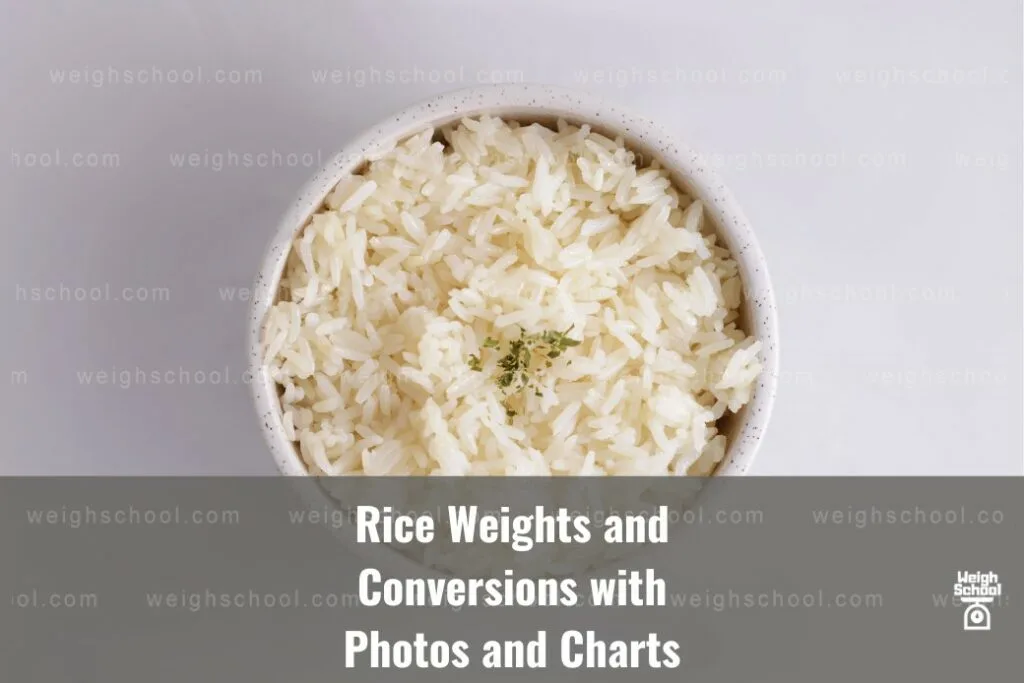
More Rice Calculators And Resources
This page is part of a series of helpful articles related to rice weights, servings, and conversions, the links below will take you to the other articles in this series, depending on what you’re looking for:
- Uncooked to cooked rice weight calculator (for any serving)
- Rice portion calculator (to help you work out how much rice you need for any number of people)
- Rice calorie calculator (for various types and any serving)
- Rice to water calculator (for the absorption method)
- Rice weights and conversions (including charts with before and after cooking weights)
Should You Use Cooked or Uncooked Rice Weights?
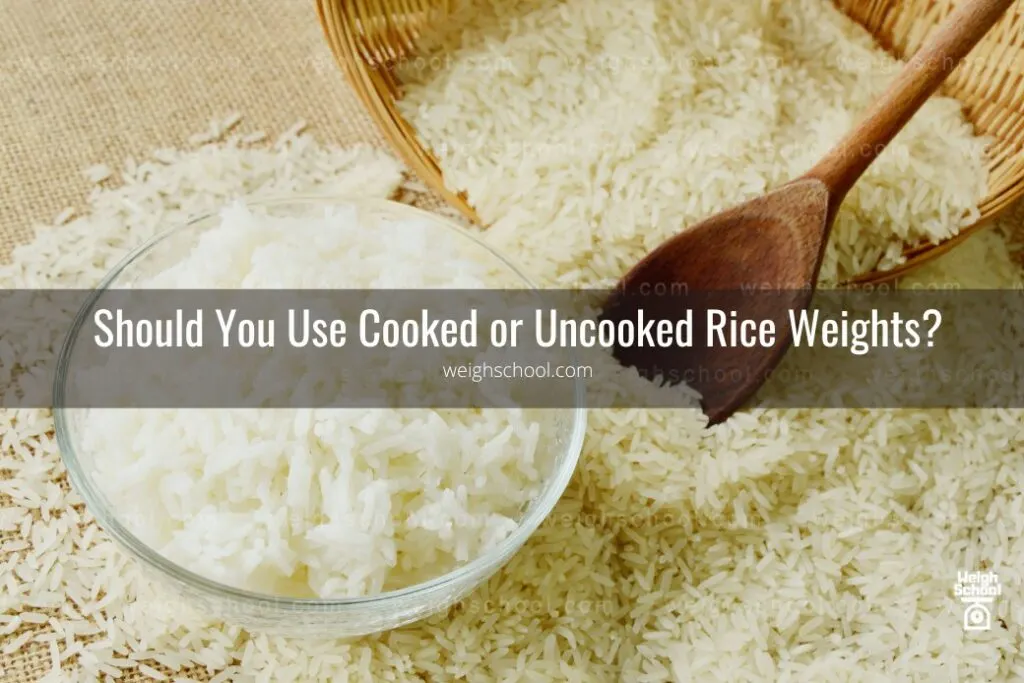
The weights and serving sizes on rice packs, in recipes, and calorie counters often vary between cooked weights and uncooked weights, and this can make things pretty confusing.
Cooked weights can vary depending on the rice type and how much water it absorbs during cooking and is, therefore, an imprecise measurement because it can vary so much.
To get an accurate rice measurement to work out calories, this should be based on the uncooked weight before the rice absorbs any water. Rice can weigh from around two and a half to three times the original weight after cooking, which means the cooked weight can vary more than an uncooked weight.
White Rice Weights Before and After Cooking
The general rule for rice weights before and after cooking is that rice weighs around three times the amount of the original dried weight once cooked in water.
I did some of my own research to test this theory, where I cooked a 75g serving of white rice following pack instructions. The results were that the 75g portion increased in weight to 214g, which is around 2.9 times the original weight.
This proves that, as an approximate guide, the 1 to 3 ratio works well for white rice.
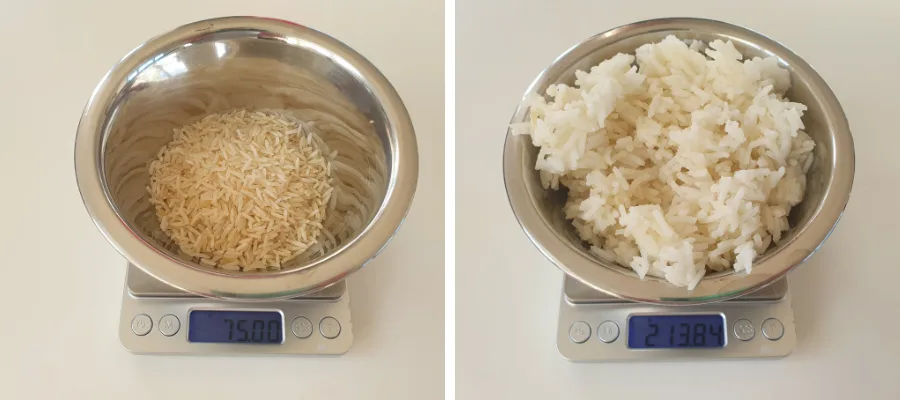
Brown Rice Weights Before and After Cooking
Because brown rice is a whole grain, it takes longer to cook and absorb water through the outer husk of the grain.
I tested the before and after cooking weights of easy-cook brown rice and, for this measurement, weighed out 75g of uncooked brown rice and cooked it as per pack instructions.
The 75g serving of brown rice once cooked using pack instructions, weighed 175g which is 2.3 times the original weight. This took the rice to a nutty stage, and if cooked further, it would weigh around 2.5 times the original weight.
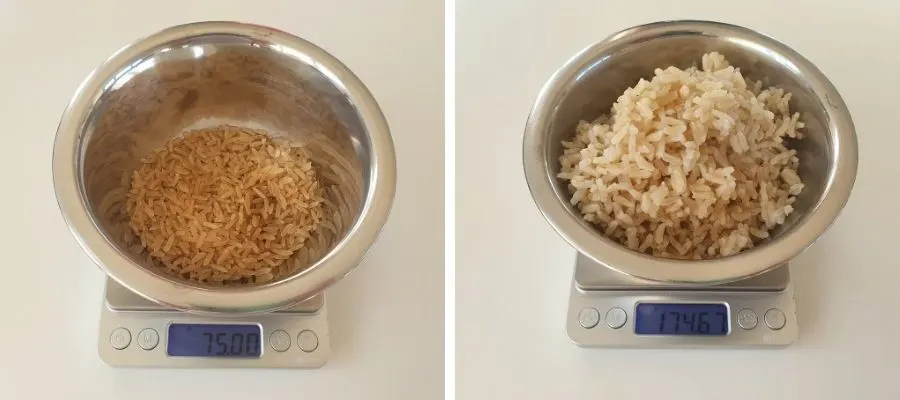
Uncooked to Cooked Rice Weight Conversion Chart
The chart below shows how much rice weighs before and after cooking based on an average weight increase of three times for white rice and a 2.5 times increase for brown rice.
| Rice Weight Before Cooking | White Rice Weight After cooking | Brown Rice Weight After cooking |
| 25g/0.9oz | 75g/2.6oz | 63g/2.2oz |
| 50g/1.8oz | 150g/5.3oz | 125g/4.4oz |
| 75g/2.6oz | 225g/7.9oz | 188g/6.6oz |
| 100g/3.5oz | 300g/10.6oz | 250g/8.8oz |
| 125g/4.4oz | 375g/13.2oz | 313g/11oz |
| 150g/5.3oz | 450g/15.9oz | 375g/13.2oz |
| 175g/6.2oz | 525g/1.2lb | 438g/15.5oz |
| 200g/7.1oz | 600g/1.3lb | 500g/1.1lb |
| 250g/8.8oz | 750g/1.7lb | 625g/1.4lb |
| 300g/10.6oz | 900g/2lb | 750g/1.7lb |
| 350g/12.3oz | 1.05kg/2.3lb | 875g/1.9lb |
| 400g/14.1oz | 1.2kg/2.6lb | 1kg/2.2lb |
| 450g/15.9oz | 1.35kg/3lb | 1.13kg/2.5lb |
| 500g/17.6oz | 1.5kg/3.3lb | 1.25kg/2.8lb |
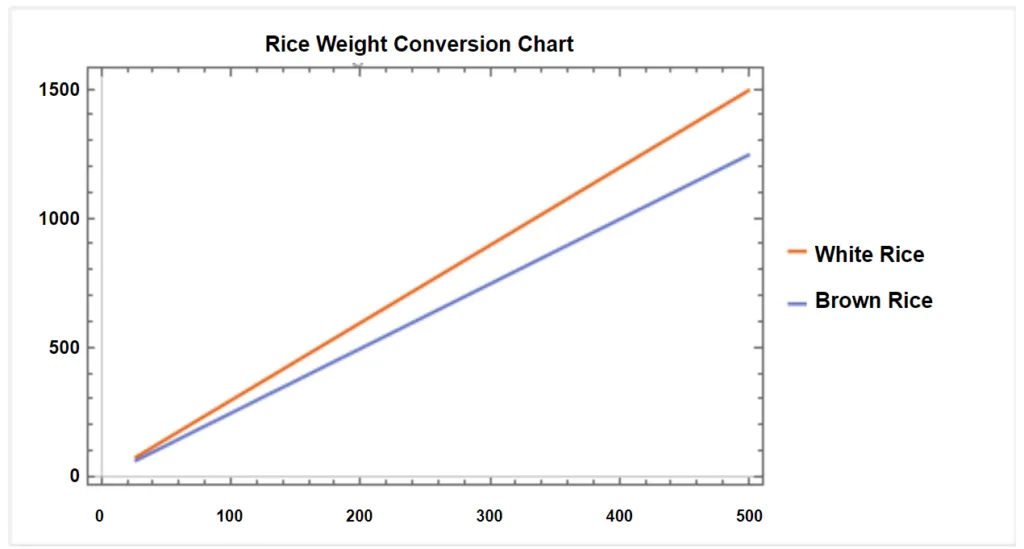
How Much is a Serving of Rice (Before and After Cooking)
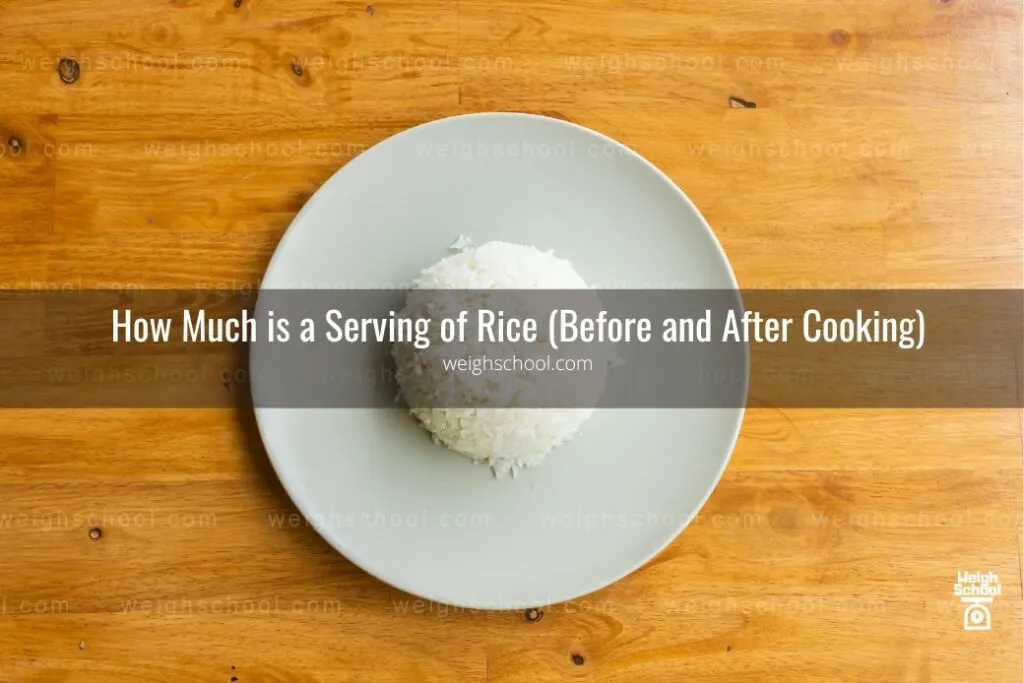
The recommended serving size of rice is 75g of uncooked rice, which makes around 225g of rice once cooked.
The image above shows this serving size before and after cooking, and it’s on the smaller side for a main course or hungry eater.
For a larger main meal portion, a good serving size is 100g/3.5oz (half a US cup) of uncooked rice per person which will make around 300g/10.6oz (one and a half US cups) of cooked rice.
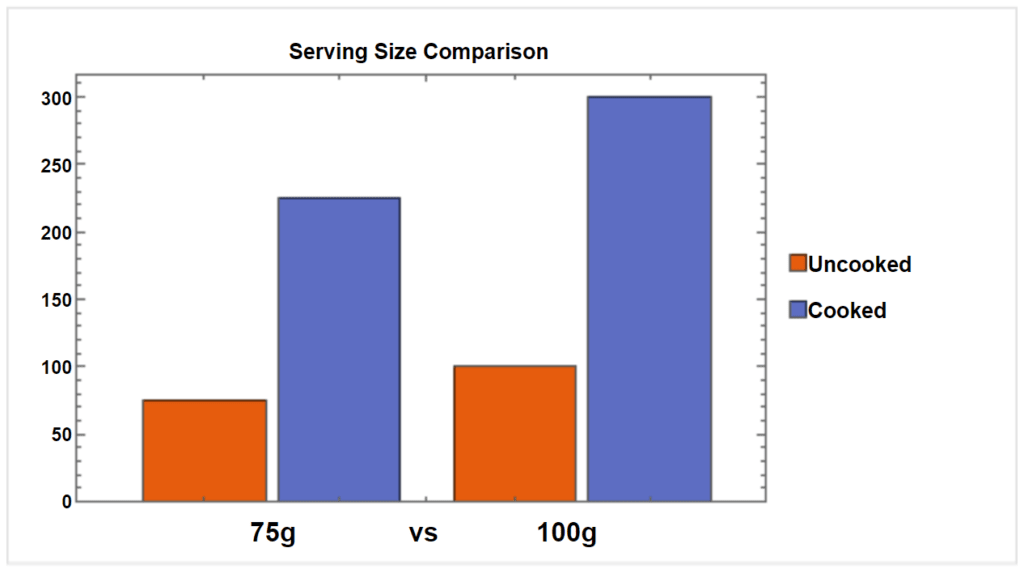
If you’re serving brown or wild rice, the same rule applies; however, the cooked weight might be slightly lower. Wholegrain rice tends to be more filling than white rice, so there’s no need to adjust the portion size.
Rice Weight Calculator per Person
Based on the information above, I’ve put together the conversion chart below to help you work out how much rice to cook per person (including converted weights).
These figures are based on an average of 75g/2.6oz (uncooked weight) per person and a large 100g/3.5oz (uncooked) serving per person and assuming the rice will increase by around three times once cooked.
| Number of people | Rice amount required for an average portion per person (uncooked) | Rice amount required for a large portion per person (uncooked) |
| 1 | 75g/2.6oz | 100g/3.5oz |
| 2 | 150g/5.3oz | 200g/7.1oz |
| 3 | 225g/7.9oz | 300g/10.6oz |
| 4 | 300g/10.6oz | 400g/14.1oz |
| 5 | 375g/13.2oz | 500g/1.1lb |
| 6 | 450g/15.9oz | 600g/1.3lb |
| 7 | 525g/1.2lb | 700g/1.5lb |
| 8 | 600g/1.3lb | 800g/1.8lb |
| 9 | 675g/1.5lb | 900g/2lb |
| 10 | 750g/1.7lb | 1kg/2.2lb |
| 11 | 825g/1.8lb | 1.1kg/2.4lb |
| 12 | 900g/2lb | 1.2kg/2.6lb |
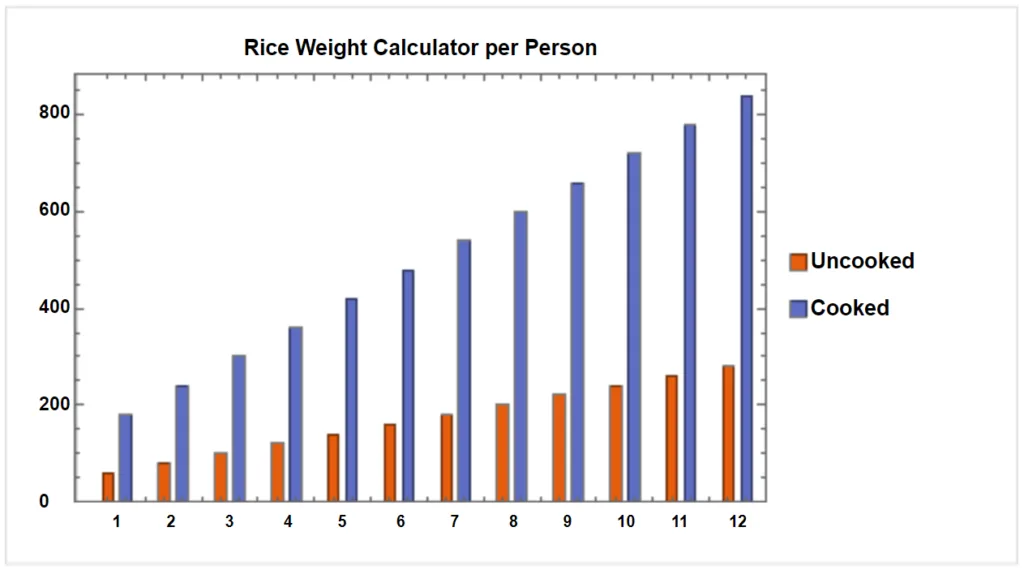
For more help on calculating rice portion sizes, take a look at my rice calculator through the link below:
Rice Portion Calculator (Including Dry to Cooked Weights)
Weight of a Cup of Rice (in Grams and Ounces)
A level US cup of uncooked rice weighs around 200g/7.1oz, is enough for two large portions of rice, and once cooked, the rice will weigh around 600g.
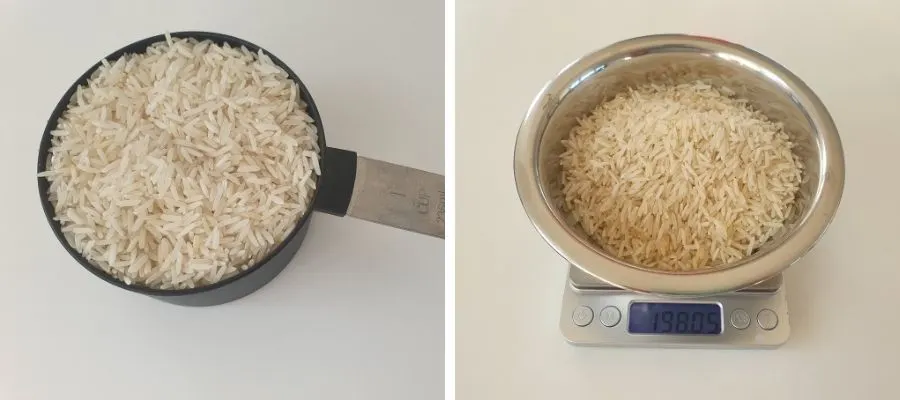
The table below shows how many US cups you would need per person for an average 75g/2.6oz serving and for a larger 100g/3.5oz portion.
| Number of people | Rice amount required for an average portion per person in US cups (uncooked) | Rice amount required for a large portion per person in US cups (uncooked) |
| 1 | 1/3 cup | 1/2 cup |
| 2 | 3/4 cup | 1 cup |
| 3 | 1 cup | 1 1/2 cups |
| 4 | 1 1/3 cup | 2 cups |
| 5 | 1 3/4 cup | 2 1/2 cups |
| 6 | 2 cups | 3 cups |
| 7 | 2 1/3 cups | 3 1/2 cups |
| 8 | 2 3/4 cups | 4 cups |
| 9 | 3 cups | 4 1/2 cups |
| 10 | 3 1/3 cups | 5 cups |
| 11 | 3 3/4 cups | 5 1/2 cups |
| 12 | 4 cups | 6 cups |
How to Weigh Rice Without Scales
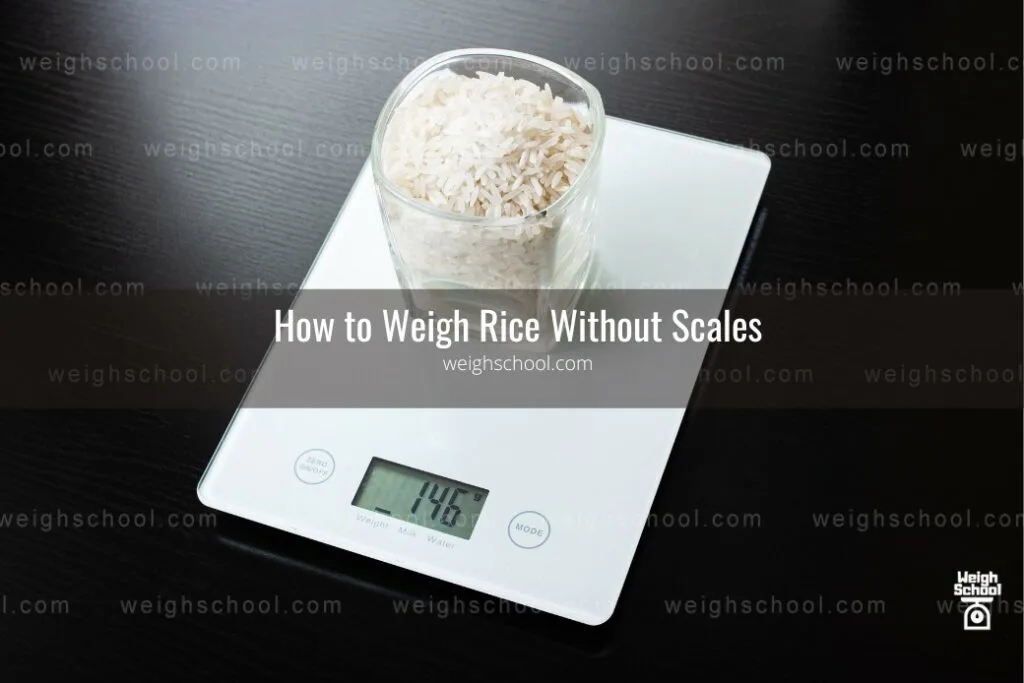
If you don’t have measuring scales and you want to measure out rice, there are a few ways you can do it:
1- Measuring Rice With a Tablespoon
This method is good for smaller portions but not so much if you’ve got a big family to feed because you’ll be counting spoons for a long time.
The average level tablespoon of rice weighs 12g/0.4oz, so for an average portion, you will need 6 tablespoons of uncooked rice per person. For a larger portion, increase to 8 tablespoons per person.
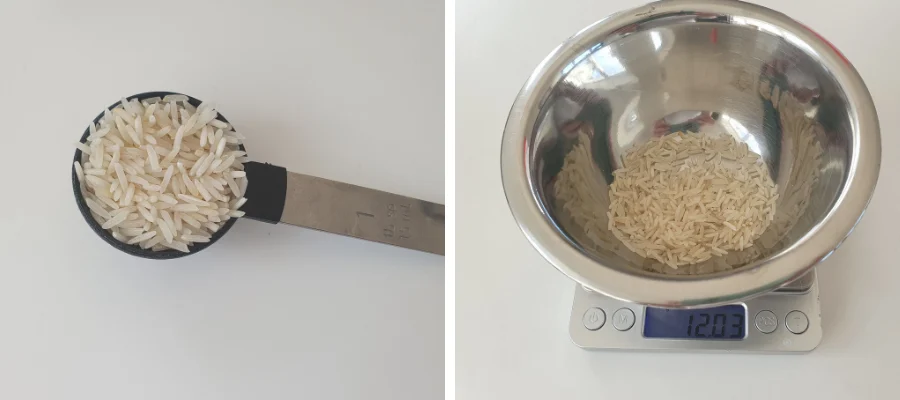
The table below shows how many tablespoons of rice you will need per person for either an average serving (75g) of rice or a larger (100g) portion (rounded to the nearest whole spoon).
| Number of people | Number of tablespoons of rice – average portion | Number of tablespoons of rice – larger portion |
| 1 | 6 | 8 |
| 2 | 13 | 17 |
| 3 | 19 | 25 |
| 4 | 25 | 33 |
| 5 | 31 | 42 |
| 6 | 38 | 50 |
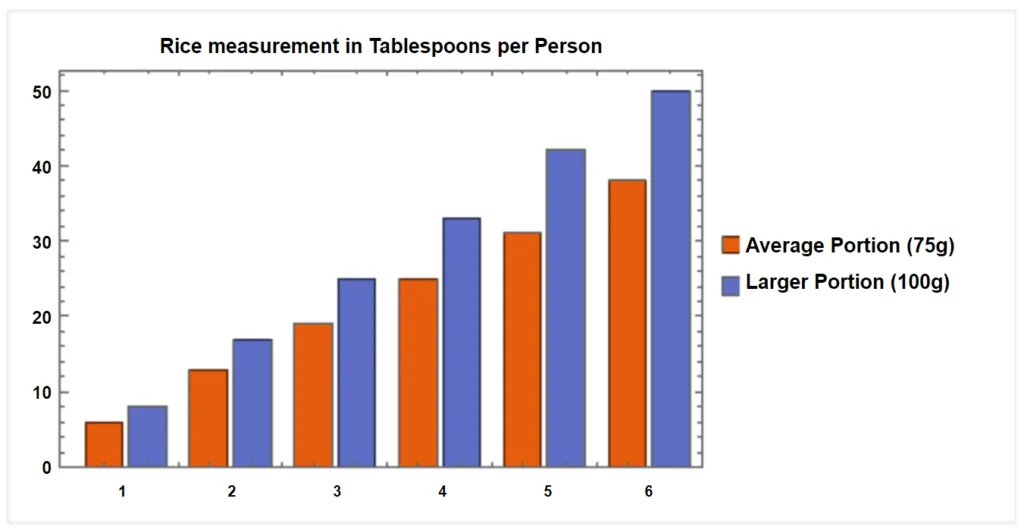
2- Measuring Rice With a US Cup
If you have a US cup or a measuring jug with US cups on then half a cup of uncooked rice is equal to one large portion per person.
A full cup of uncooked rice will be enough for two large servings or three smaller servings.
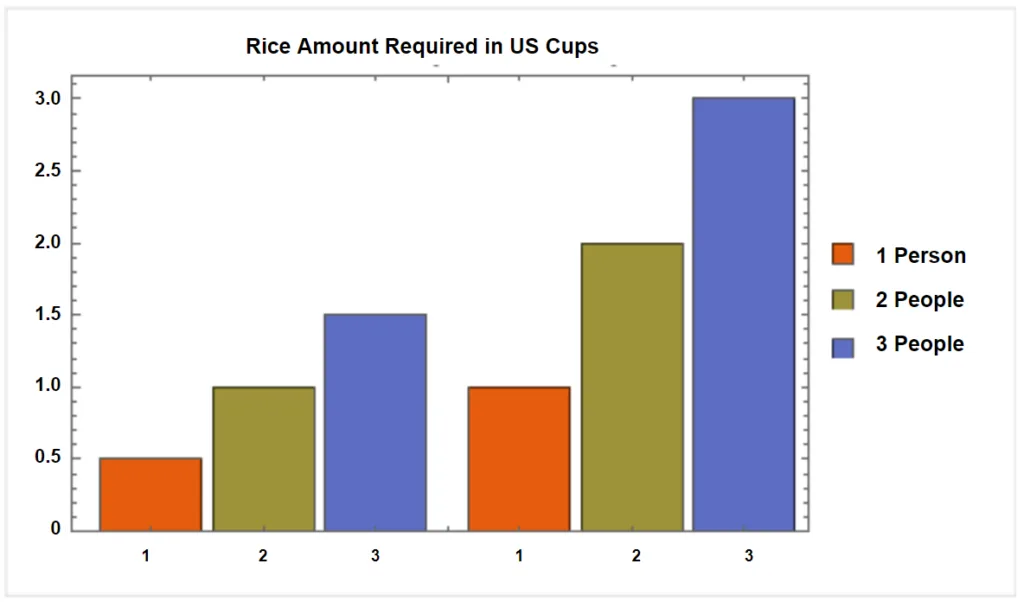
3- Measuring Rice Using a Generic Cup
Cups and mugs that aren’t intended for measurements can be used as an easy way to measure out rice, and this is how I always do it.
Using the same cup each time helps you to get to know how much rice you need each time.
I use a large mug designed for tea and coffee, and this holds three large portions of rice.
4- Measuring Rice Using a Measuring Jug
If you have a measuring jug, you can measure out your uncooked rice into the jug to get an approximate serving size.
If you have milliliters on your jug, 100ml of uncooked rice is the same as 100g of rice, which is equal to a large serving for one person.
In fluid ounces, a 100g serving would be around 3.4fl oz.
5- Measuring Rice in Handfuls
If you don’t have anything to measure rice with, then you always have your hands.
Obviously, hands come in various sizes, but an average-sized heaped handful of rice contains around 40-50g of rice, so for an average serving, this would be about two handfuls of uncooked rice per person.
More Rice Weight FAQs
100g of cooked rice is equal to half a cup or around 7 heaped tablespoons.
Equipment and Information Used for This Article
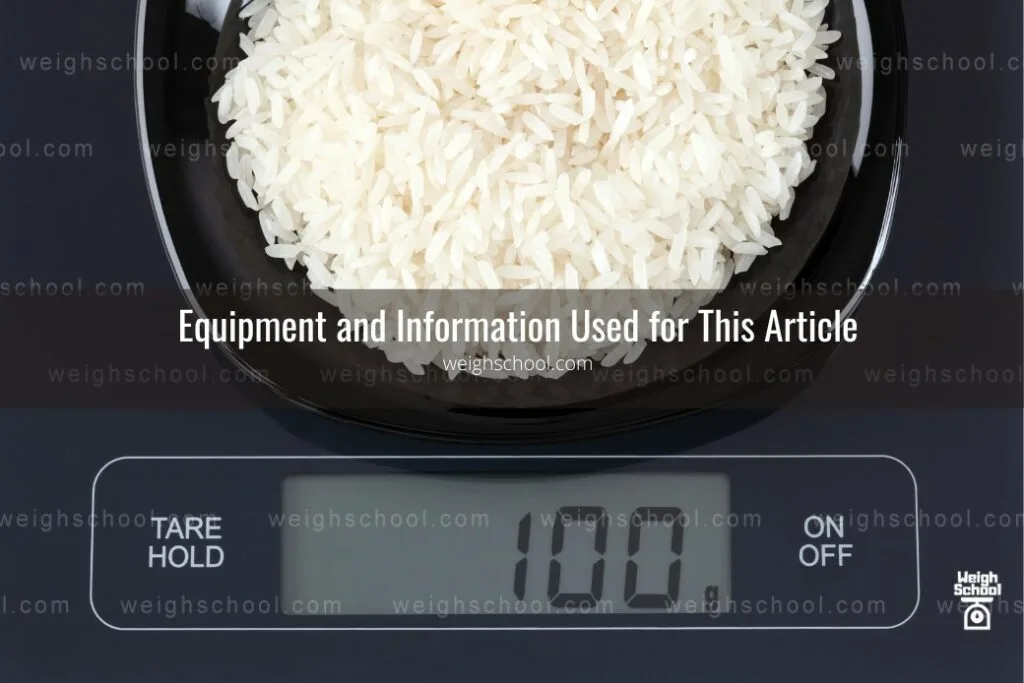
I used precision scales that weigh 0.01 of a gram which is regularly calibrated with a 100g weight. For more information, see my recommended weighing scales here.
To make sure the information in this article is accurate, I researched and cross-referenced various sources (as well as original research) to obtain the correct weights and calories.
Articles You Might Find Useful
I hope this post helped you to find out more about rice weights before and after cooking; you might also find the following articles helpful too:
